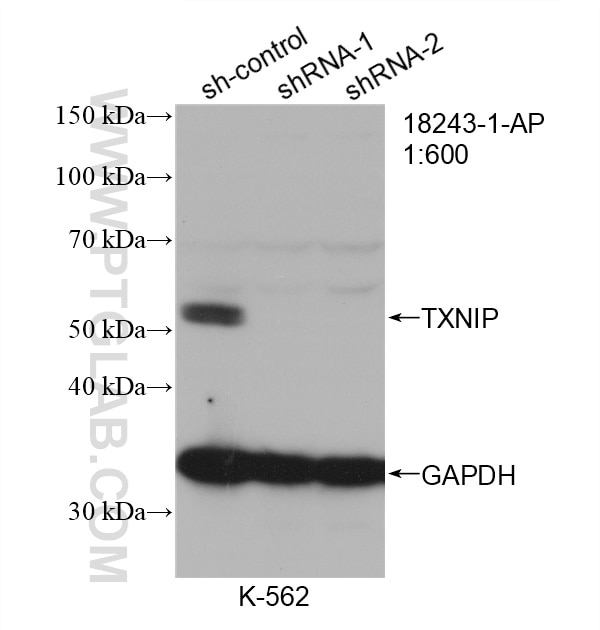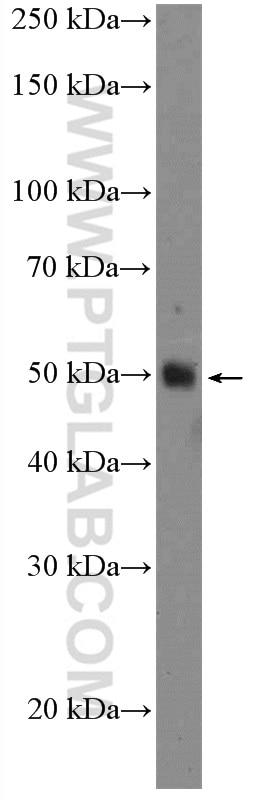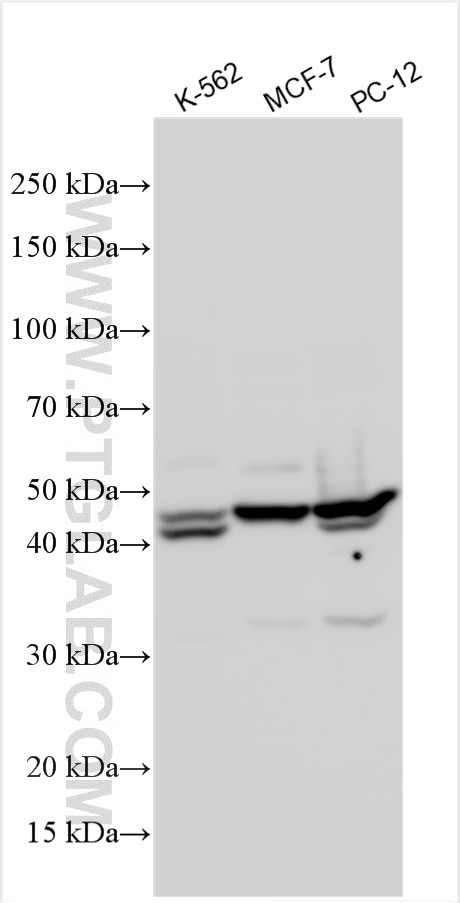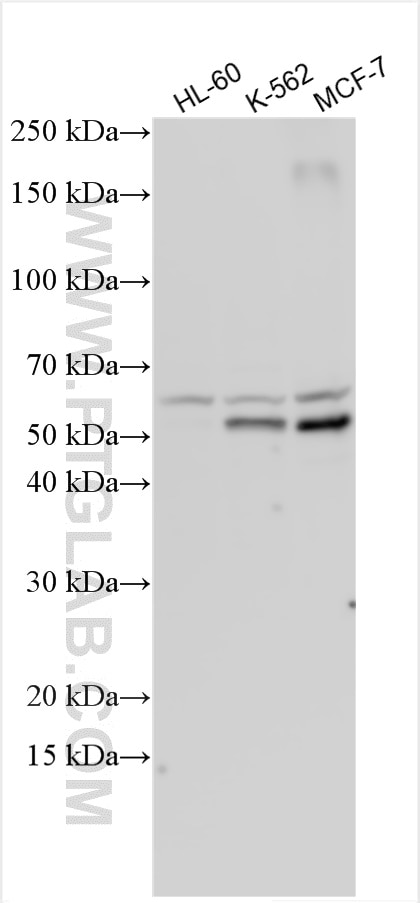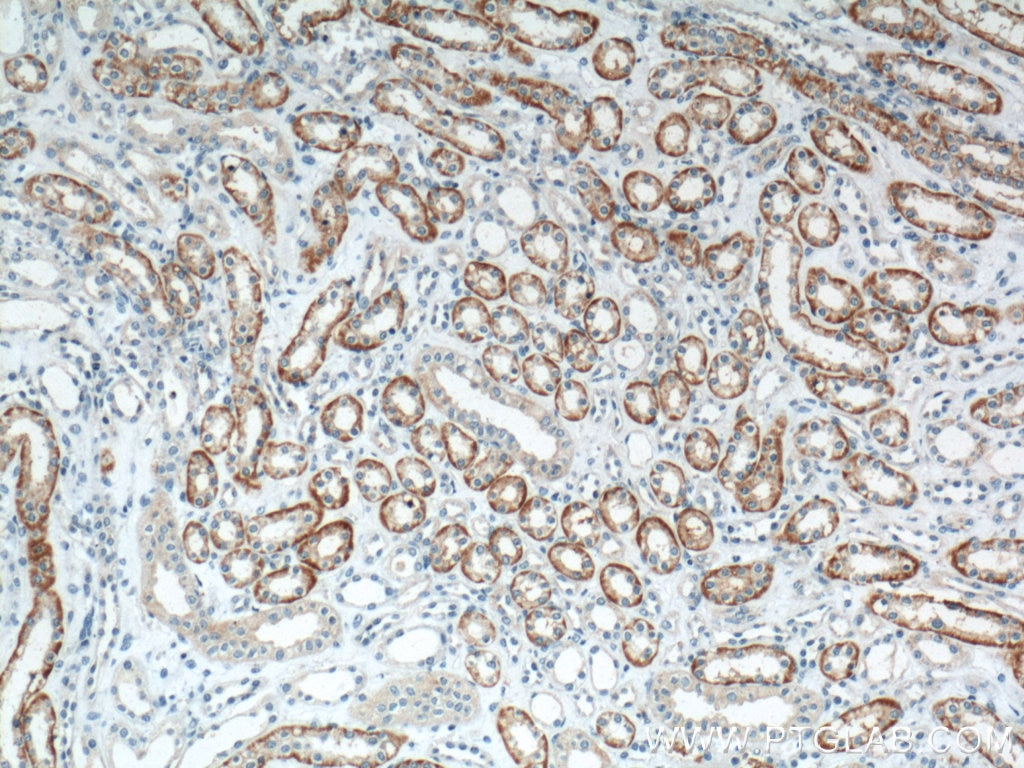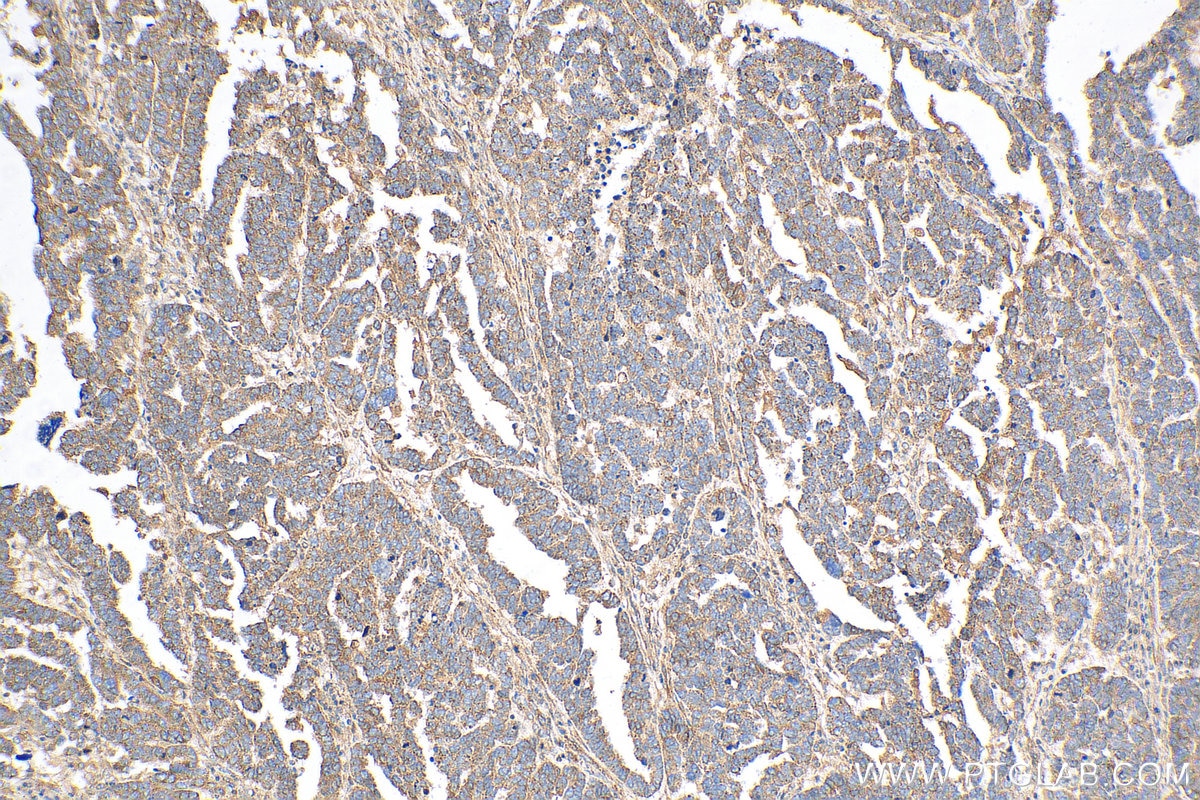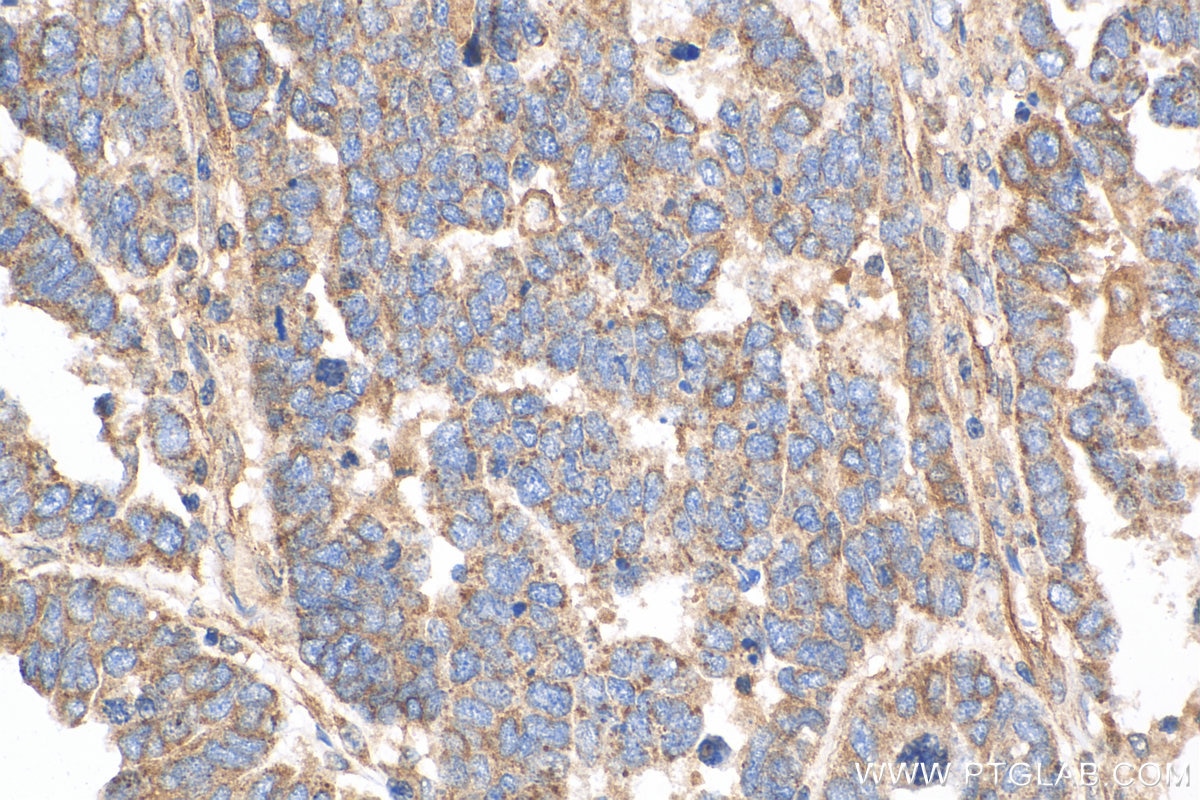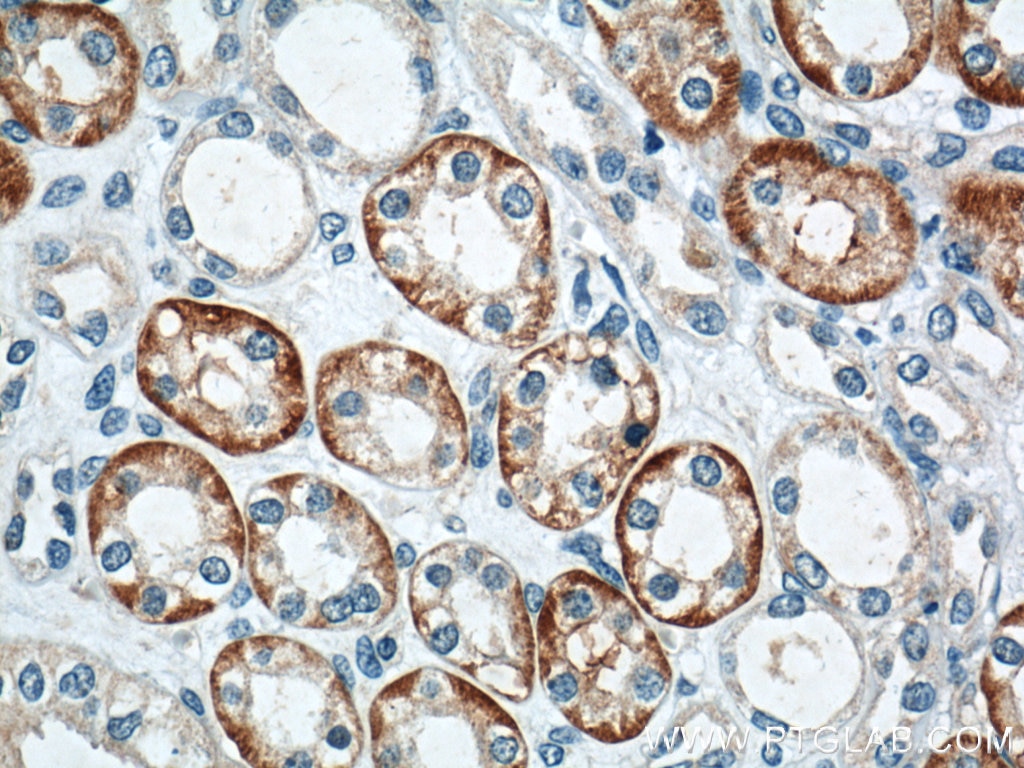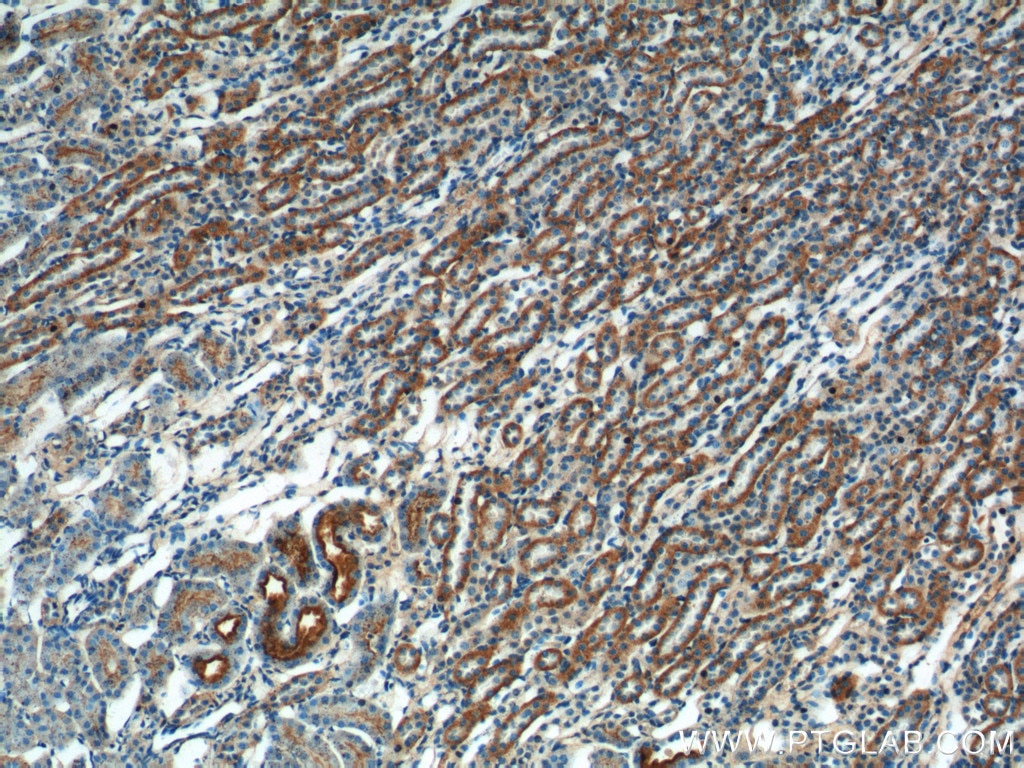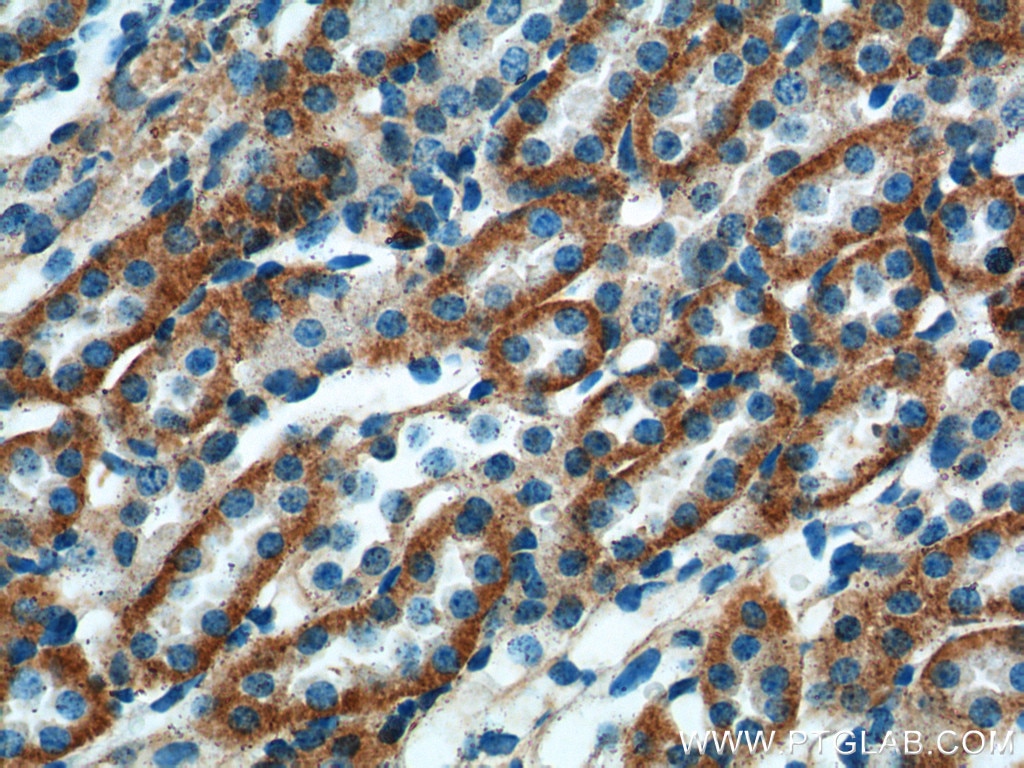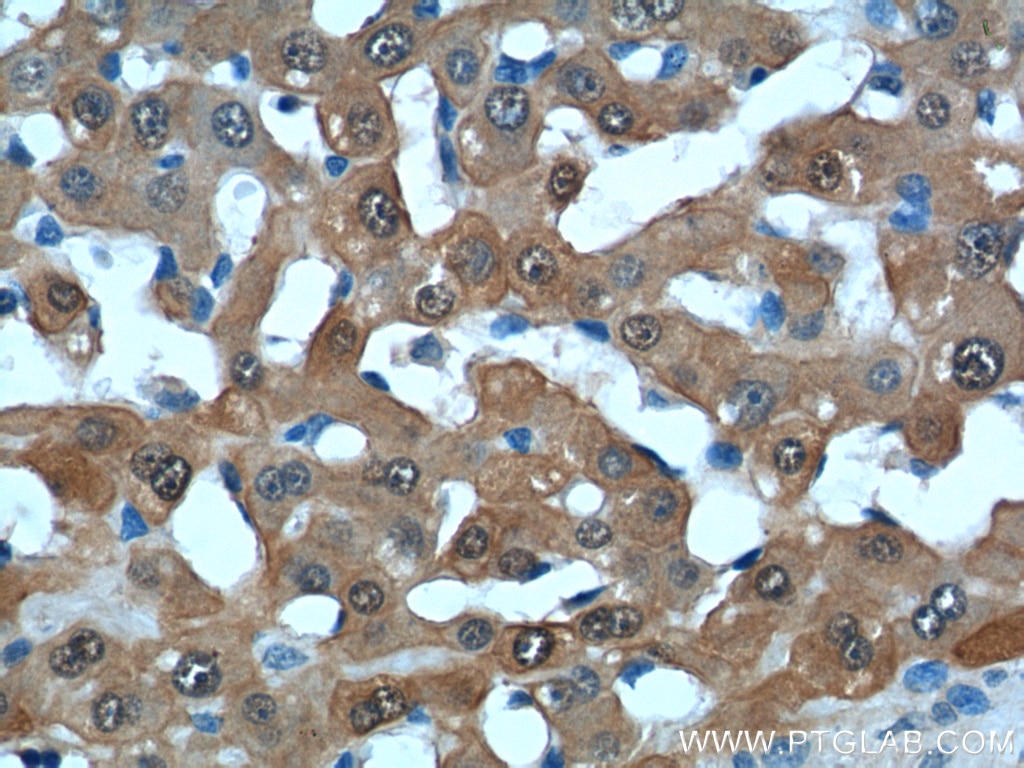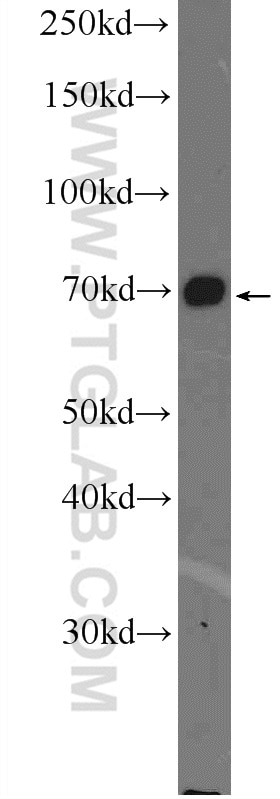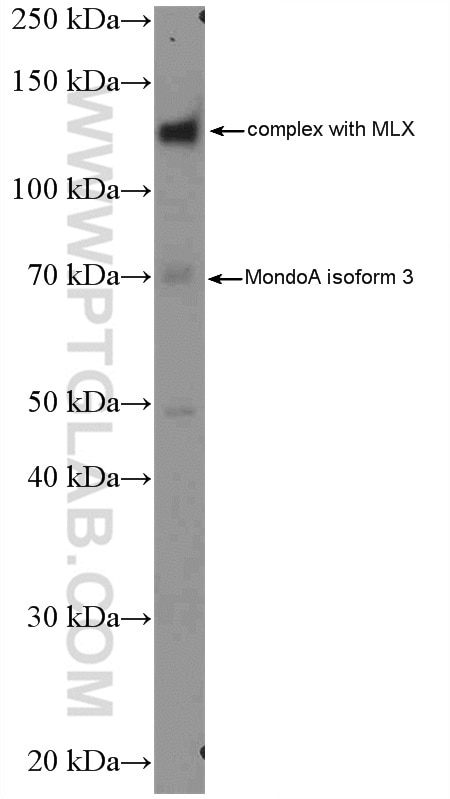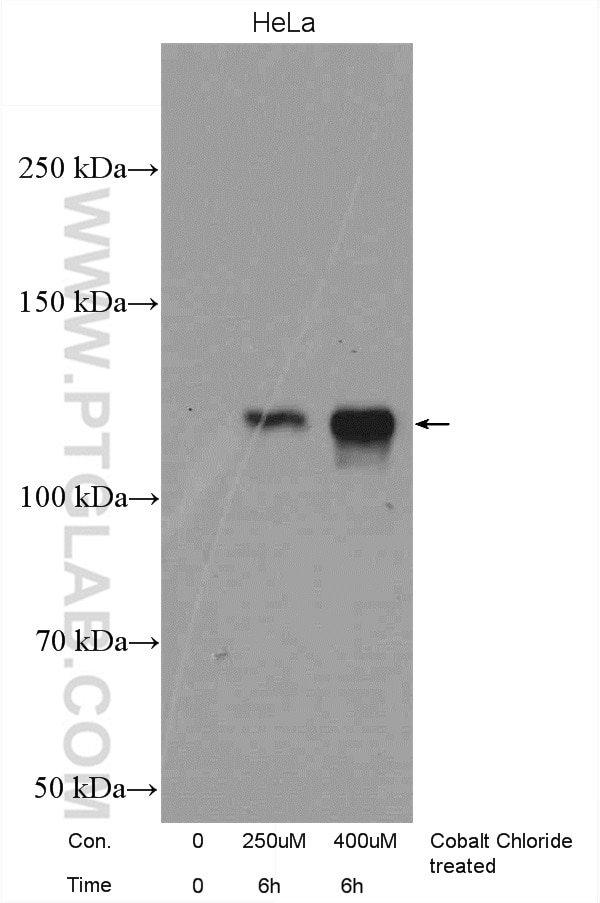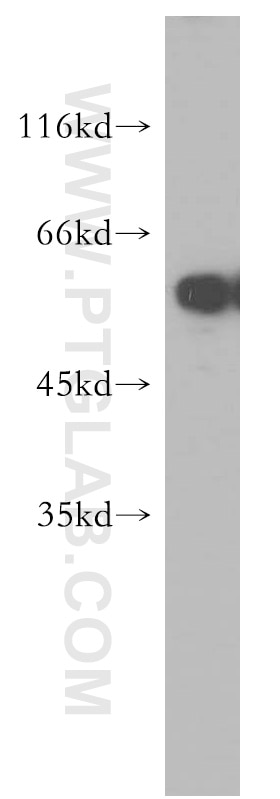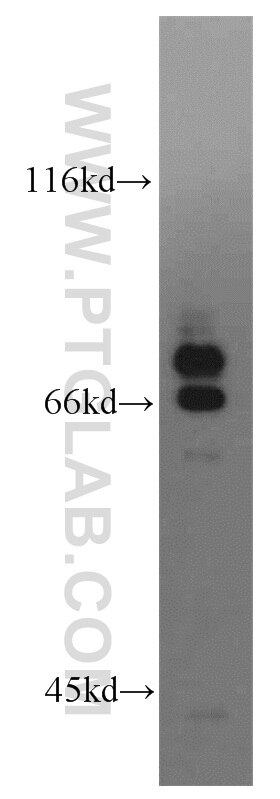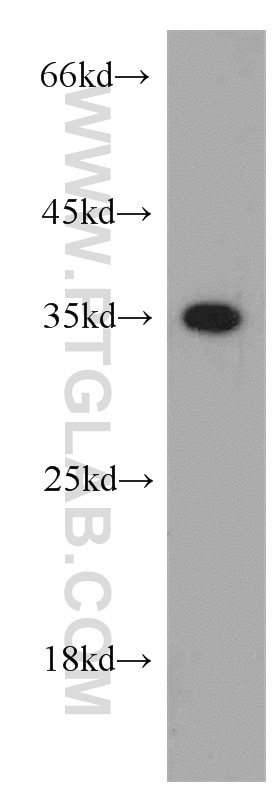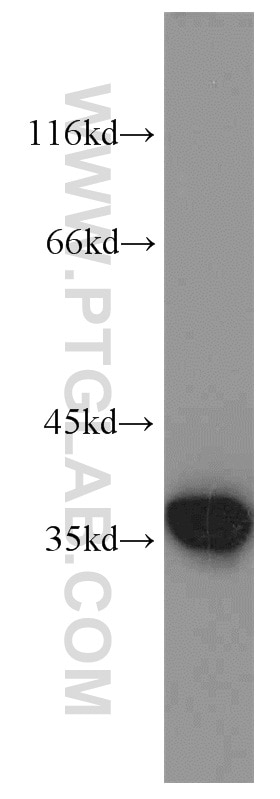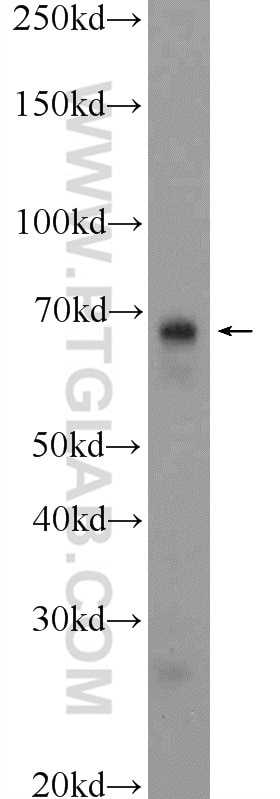- Phare
- Validé par KD/KO
Anticorps Polyclonal de lapin anti-TXNIP
TXNIP Polyclonal Antibody for WB, IHC, ELISA
Hôte / Isotype
Lapin / IgG
Réactivité testée
Humain, rat, souris
Applications
WB, IP, IF, IHC, ELISA
Conjugaison
Non conjugué
N° de cat : 18243-1-AP
Synonymes
Galerie de données de validation
Applications testées
| Résultats positifs en WB | cellules HL-60, cellules K-562, cellules MCF-7, cellules PC-12 |
| Résultats positifs en IHC | tissu rénal humain, tissu de tumeur ovarienne humain, tissu rénal de souris il est suggéré de démasquer l'antigène avec un tampon de TE buffer pH 9.0; (*) À défaut, 'le démasquage de l'antigène peut être 'effectué avec un tampon citrate pH 6,0. |
Dilution recommandée
| Application | Dilution |
|---|---|
| Western Blot (WB) | WB : 1:500-1:2000 |
| Immunohistochimie (IHC) | IHC : 1:50-1:500 |
| It is recommended that this reagent should be titrated in each testing system to obtain optimal results. | |
| Sample-dependent, check data in validation data gallery | |
Applications publiées
| KD/KO | See 6 publications below |
| WB | See 63 publications below |
| IHC | See 21 publications below |
| IF | See 11 publications below |
| IP | See 3 publications below |
| FC | See 1 publications below |
Informations sur le produit
18243-1-AP cible TXNIP dans les applications de WB, IP, IF, IHC, ELISA et montre une réactivité avec des échantillons Humain, rat, souris
| Réactivité | Humain, rat, souris |
| Réactivité citée | rat, Humain, souris |
| Hôte / Isotype | Lapin / IgG |
| Clonalité | Polyclonal |
| Type | Anticorps |
| Immunogène | TXNIP Protéine recombinante Ag13009 |
| Nom complet | thioredoxin interacting protein |
| Masse moléculaire calculée | 391 aa, 44 kDa |
| Poids moléculaire observé | 50-55 kDa |
| Numéro d’acquisition GenBank | BC093702 |
| Symbole du gène | TXNIP |
| Identification du gène (NCBI) | 10628 |
| Conjugaison | Non conjugué |
| Forme | Liquide |
| Méthode de purification | Purification par affinité contre l'antigène |
| Tampon de stockage | PBS avec azoture de sodium à 0,02 % et glycérol à 50 % pH 7,3 |
| Conditions de stockage | Stocker à -20°C. Stable pendant un an après l'expédition. L'aliquotage n'est pas nécessaire pour le stockage à -20oC Les 20ul contiennent 0,1% de BSA. |
Informations générales
TXNIP, also known as VDUP-1 or TBP-2, belongs to alpha-arrestin protein family and is perhaps the only family member known to bind thioredoxin (TRX). TXNIP was induced by Vitamin D3, but not induced by another monocyte or macrophage differentiation inducer: phorbol 12-myristate 13-acetate (PMA). TXNIP bound catalytic active center of thioredoxin (TRX), which protected cells against oxidative stress. TXNIP was found to be a negative regulator of thioredoxin activity and inducer of the intracellular level of reactive oxygen species (ROS). TXNIP plays an important role in a wide variety of biological functions, such as the regulation of cell death, growth, differentiation, and energy metabolism.
Protocole
| Product Specific Protocols | |
|---|---|
| WB protocol for TXNIP antibody 18243-1-AP | Download protocol |
| IHC protocol for TXNIP antibody 18243-1-AP | Download protocol |
| Standard Protocols | |
|---|---|
| Click here to view our Standard Protocols |
Publications
| Species | Application | Title |
|---|---|---|
Gastroenterology MondoA-Thioredoxin-Interacting Protein Axis Maintains Regulatory T-Cell Identity and Function in Colorectal Cancer Microenvironment. | ||
Clin Cancer Res FBW7 (F-box and WD repeat domain-containing 7) negatively regulates glucose metabolism by targeting the c-Myc/TXNIP (thioredoxin binding protein) axis in pancreatic cancer. | ||
Theranostics Epigenetic repression of miR-17 contributed to di(2-ethylhexyl) phthalate-triggered insulin resistance by targeting Keap1-Nrf2/miR-200a axis in skeletal muscle. | ||
Oxid Med Cell Longev PPARγ Alleviates Sepsis-Induced Liver Injury by Inhibiting Hepatocyte Pyroptosis via Inhibition of the ROS/TXNIP/NLRP3 Signaling Pathway. |
